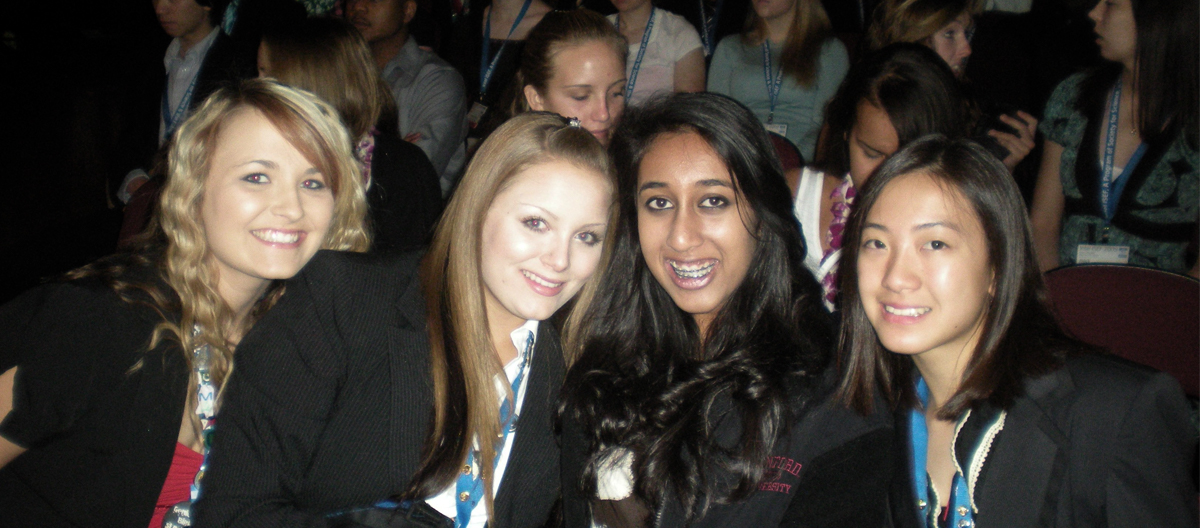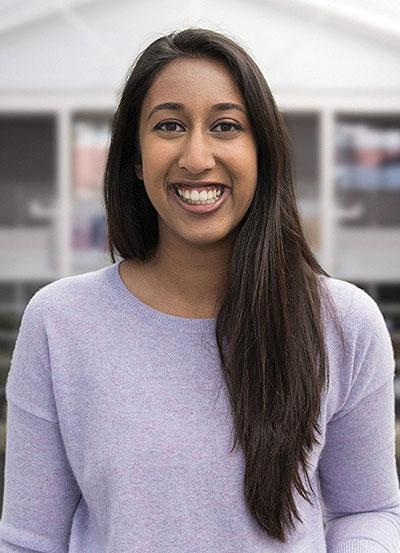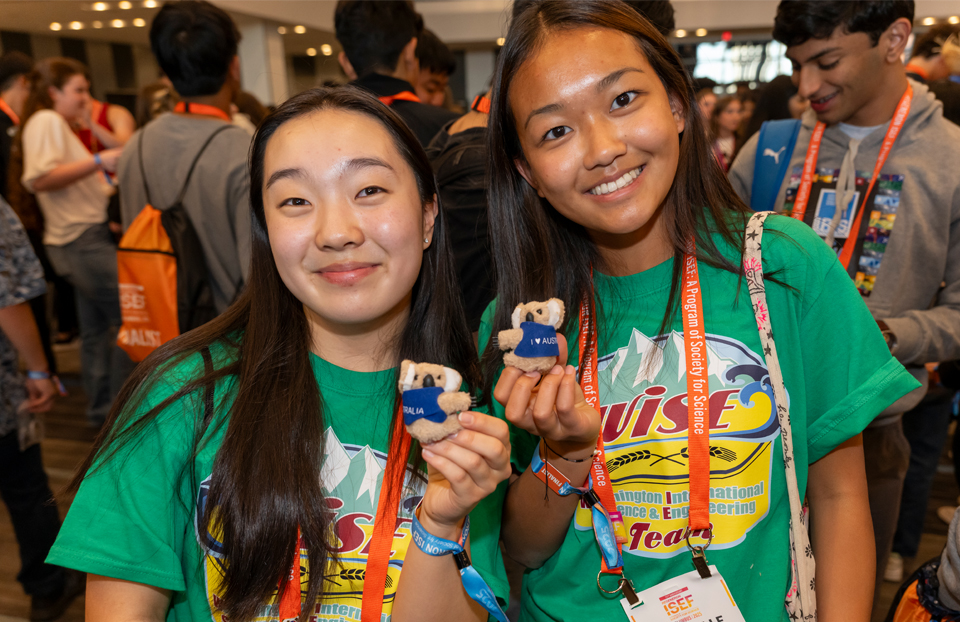Conversations with Maya: Divya Nag

Maya Ajmera, President & CEO of Society for Science & the Public and Publisher of Science News, sat down to chat with Divya Nag, who works for Apple in the Health Special Projects section. Nag is also a member of the Society’s National Leadership Council. We are thrilled to share an edited summary of the conversation.
You competed in the Intel International Science and Engineering Fair (ISEF) in 2007 and 2009. How did these competitions impact your life, and are there any particular moments that still stand out for you?
I could gush about ISEF for hours on end. It was during ISEF that I realized I loved science. One moment that is etched in my memory is walking on the floor for the first time and seeing hundreds of rows of booths with absolutely brilliant high school students and these larger-than-life poster boards. I call it my Disneyland — my happiest place on Earth.
Until that experience, I never thought it was possible for high school students to do such cutting-edge work. Seeing this incredible work opened my eyes to opportunities that I should be fighting for. In 2007, I didn’t place, but when 2009 came around, it was a very different experience for me. I came in with a completely new level of confidence and a higher level of science.

What was different? What did you do to open more doors?
I petitioned University of California, Davis, which was the university closest to my high school, to let me conduct research during the school year. I sent hundreds of e-mails to professors there to see if anyone would let a high school student work in their lab. Then, I spent all my time at the lab after school. In those two years, I published my first peer-reviewed paper. By the time I got to ISEF in 2009, I had already won because I had shown myself what was possible.
What was your project about?
My project focused on preventing forest fires, specifically trying to understand if we could chemically change the composition of soil to stop forest fires from happening. I was excited and passionate about the earth sciences. 2009 was a time when Sacramento, which is where I went to high school, had a number of forest fires.
You transitioned from earth science to studying health care at Stanford University. How did you make that pivot? What led you to start your companies, Stem Cell Theranostics and StartX Med?
When I came to Stanford, I thought I would major in earth sciences. But after doing some research into the opportunities that were available at the time, I felt like I had already explored the earth science research topics available to me.
Additionally, at that time, there was an air of mystique and untapped potential, and even danger, around stem cell use. Embryonic stem cell use had been banned and that piqued my interest. It seemed like a very high risk, very high reward area to research.
It was a huge mental shift for me to think about entering biology, but I’m driven by the type of impact you can make. Stem cell use to potentially treat very serious conditions was extremely exciting, and so during the start of my freshman year, I joined Stanford’s Institute for Stem Cell Biology and Regenerative Medicine. That lab work led to the creation of Stem Cell Theranostics, a company that today provides drug companies with a method to more accurately predict cardiotoxicity and cardiovascular drug efficacy.
Tell me about StartX Med. What does the company do and when did you launch?
StartX Med is an interesting story. When Andrew Lee, another student, and I started Stem Cell Theranostics with our professors, we dropped out of Stanford to work full time. But we realized that we knew nothing about running a company. All we had was science and passion and that’s not nearly enough to make a company successful.
That led us to join Stanford’s accelerator program, Stanford Student Enterprises (SSE) Labs. Because of its name, we mistakenly thought the program provided lab space, which we were in desperate need for. Unfortunately, the name was a misnomer, and the program only offered a laptop and desk. Although it was predominantly a consumer IT accelerator program, after a few sessions, it became clear that there are some universal truths when starting a company: the importance of picking a right cofounder, raising money, establishing a team culture and hiring your first non-cofounding employee.
There were a lot of differences too, and so in 2012 — while I was still running Stem Cell Theranostics — I started StartX Med, the medical arm of SSE Labs. StartX Med sought to create specialized resources for medical entrepreneurs, like help with U.S. Food and Drug Administration approvals.
You left Stanford during your sophomore year to build your company. What was going through your mind when you made such a critical decision? Did you get any pushback?
My parents still ask me if I plan to finish my degree. In many ways, it was the hardest decision I’ve ever had to make, but also, the easiest because the promise of the work that we developed was all-consuming.
In 2014, at just 23 years old, you joined the Apple Special Projects Group. What is your current role and what has it been like for you having this type of position at such a young age?
I never thought I’d end up at a place like Apple. My job description is essentially to push boundaries and dream of what the future of health care looks like and what role Apple can play. Apple’s cultural DNA is fueled by making products that consumers love, and I think that focus when applied to industries like health care, which haven’t traditionally put consumers at the center, has been incredible.
You serve as a role model for women who’d like to enter male-dominated fields like science, engineering and technology. What advice do you have for young women like yourself?
I want to live in a world where science, engineering and technology have the best and brightest minds working on some of these challenging problems and that cannot happen if half of the mindshare isn’t even at the table. I would like to tell women not to give up. Don’t be disheartened by being the only woman in a classroom or in a boardroom. Own it. Love it. Be curious. Tackle problems that are super, super hard. Fail at things, but spectacularly, and don’t be afraid of that, and you’ll undoubtedly find not only value in all those experiences, but grow and learn as a person.
What books inspired you when you were young?
I think that reading fiction not only builds empathy, but exposes readers to a different way of life. You can imagine flying cars and life in space. When I was younger, all the books that I remember most fondly, like Brave New World, were where you empathize and live in imaginary worlds.
You once told Fortune, “I want to put people in charge of their health. It’s not about living with a specific disease or condition. It’s about living, full stop.” This is a powerful statement. Can you tell me more about what you meant?
I view health as a fundamental human right, and I’m obsessed with empowering consumers to have a voice in their own health care. It’s crazy to me that other people dictate what we can and can’t know about our health. In our system, people are not thought of as people — they are thought of as their condition. It’s all about treating diabetes or cancer, and as a result, medical products and innovation in this space involve horrible user experiences. These products are being designed for conditions, not individuals. I want to change that by putting people back at the center.
There are so many challenges in the world today. What keeps you up at night?
I’m concerned about the growing inequalities in the world, whether that’s the education gap, the income gap, incarceration inequity or the health gap where the sick get sicker. So I spend my nights thinking about how technology can help close that opportunity gap and bring us closer to an even playing field.


